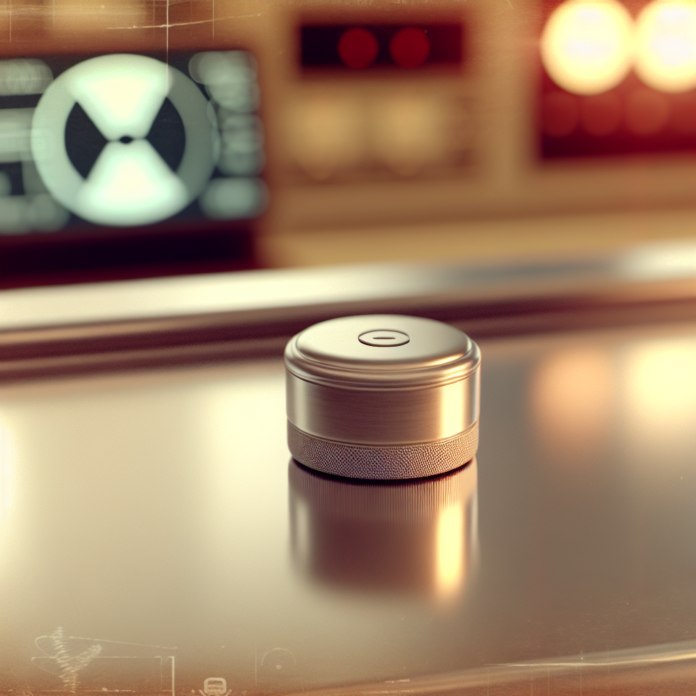China Unveils Revolutionary Nuclear Battery: A Leap Toward Futuristic Energy Solutions
Introduction: A New Era in Nuclear Energy
In a groundbreaking announcement, Chinese scientists have introduced a new type of nuclear battery technology that can power small devices for up to 50 years without recharging. This radical innovation, which harnesses the power of nickel-63 isotopes, is a major milestone in the field of alternative energy, potentially reshaping everything from medical implants to aerospace applications. As China positions itself as a leader in clean and sustainable energy, this latest development is set to leave a lasting mark on global energy innovations.
What Is a Nuclear Battery?
Nuclear batteries, also known as atomic batteries or radioisotope thermoelectric generators (RTGs), operate by converting the energy released from radioactive isotopes into electricity. Unlike traditional batteries that require chemical reactions and frequent recharging, nuclear batteries use the decay of radioactive materials to generate a constant and long-lasting power source.
The most common application of these batteries has been in space missions, where reliability and longevity are critical. However, China’s latest endeavor brings this technology one step closer to becoming viable for everyday devices.
Why Nickel-63 Is a Game-Changer
China’s innovation revolves around the use of nickel-63, a radioactive isotope that emits low-energy beta particles. One significant advantage of nickel-63 is its long half-life of over 100 years, which enables the battery to provide stable power for decades. Furthermore, it produces minimal radiation, making it safe for use in various biomedical and consumer applications.
Nickel-63 is also a relatively clean source of energy—it doesn’t generate greenhouse gases or require exposure to hazardous chemicals during its decay, positioning it as an eco-friendly alternative to traditional energy storage technologies.
Potential Applications of China’s Nuclear Battery
The long-lasting and maintenance-free nature of nuclear batteries makes them ideal for a range of specialized applications:
1. Medical Devices
Implantable medical devices like pacemakers can greatly benefit from nuclear batteries. Current devices require surgery for battery replacements every 5 to 10 years. With nuclear batteries, they could stay powered for the entire lifetime of a patient, significantly reducing medical risks and healthcare costs.
2. Aerospace and Space Exploration
Space missions demand power sources that can operate reliably for years without maintenance. China’s nuclear batteries can provide consistent energy for satellites, space probes, and even lunar or Martian rovers, enabling deeper space exploration with reduced logistical constraints.
3. Environmental Sensors and Remote Monitoring
Remote sensors deployed in inaccessible regions—such as the deep sea, polar zones, or deserts—could use nuclear batteries to remain functional for decades without the need for human intervention. This would be a breakthrough for climate monitoring and disaster prediction systems.
4. Internet of Things (IoT) Devices
The IoT market is flooded with small devices that require long-lasting power but can’t be easily wired or recharged. Nuclear batteries could power everything from smart watches to autonomous drones, removing a major barrier to scaling up IoT ecosystems.
How Safe Are Nuclear Batteries?
Safety is a critical concern any time radioactive materials are involved. However, China’s nickel-63-based nuclear batteries are designed with multiple layers of protection. The radioactive isotope is encapsulated in robust diamond-like carbon layers that prevent leaks and withstand extreme environmental conditions.
Unlike plutonium-powered RTGs used in some U.S. space missions, nickel-63 emits low-energy beta particles which can be shielded easily and pose minimal risk to human tissue. The batteries produce no external radiation under normal operation, making them safe for both industrial and potential consumer use.
Environmental Impact and Sustainability
Compared to traditional energy sources, nuclear batteries boast zero carbon emissions during operation. The production of nickel-63 itself does have an environmental footprint, but technological advancements are making isotope production cleaner and more efficient. Because these batteries last for decades, their long-term sustainability outpaces that of conventional lithium-ion batteries, which degrade rapidly and generate toxic waste.
Moreover, nuclear batteries could reduce our dependence on finite resources like lithium, cobalt, and rare earth materials, many of which are mined under environmentally harmful conditions.
Challenges to Widespread Adoption
Despite the promise, there are still challenges to overcome before nuclear batteries become mainstream:
1. High Production Costs
The creation of isotopes such as nickel-63 is expensive and requires advanced facilities, including nuclear reactors and particle accelerators. Scaling production to meet commercial demand may require substantial investment.
2. Regulatory Hurdles
Government regulations concerning the manufacturing, transportation, and disposal of radioactive materials are stringent. Developing internationally accepted protocols and standards for safe use will be essential.
3. Public Perception
The concept of “radioactive” batteries may alarm the public, even if the technology is proven to be safe. Transparent communication and public education will be critical to gaining widespread acceptance.
China’s Global Influence in Clean Tech Innovation
This nuclear battery breakthrough underlines China’s growing dominance in clean tech innovation. With strategic investments in green technologies—ranging from solar and wind energy to electric vehicles and now nuclear batteries—China is clearly determined to lead the global transition toward sustainability.
The nuclear battery also aligns with China’s “Made in China 2025” initiative, which emphasizes self-sufficiency in high-tech industries, including energy storage and aerospace.
What the Future Holds
As production methods improve and costs decrease, nuclear batteries could revolutionize the way we think about power. Imagine a future where your smartwatch never runs out of juice, where satellites operate for generations, and where life-saving implants work perpetually without invasive procedures.
While still in its early stages, China’s new nuclear battery is a bold stride toward such a future. Continued research and international collaboration will be vital to unlock the full potential of nuclear-powered micro energy systems.
Conclusion
China’s unveiling of its advanced nuclear battery technology represents a significant leap forward in sustainable energy innovation. By offering safe, long-lasting, and ultra-efficient power sources, nuclear batteries could change the dynamics of multiple industries—from healthcare and space exploration to environmental monitoring and the Internet of Things.
As the world strives for smarter, greener, and longer-lasting energy solutions, nuclear batteries may be just the power boost we’ve all been waiting for.


